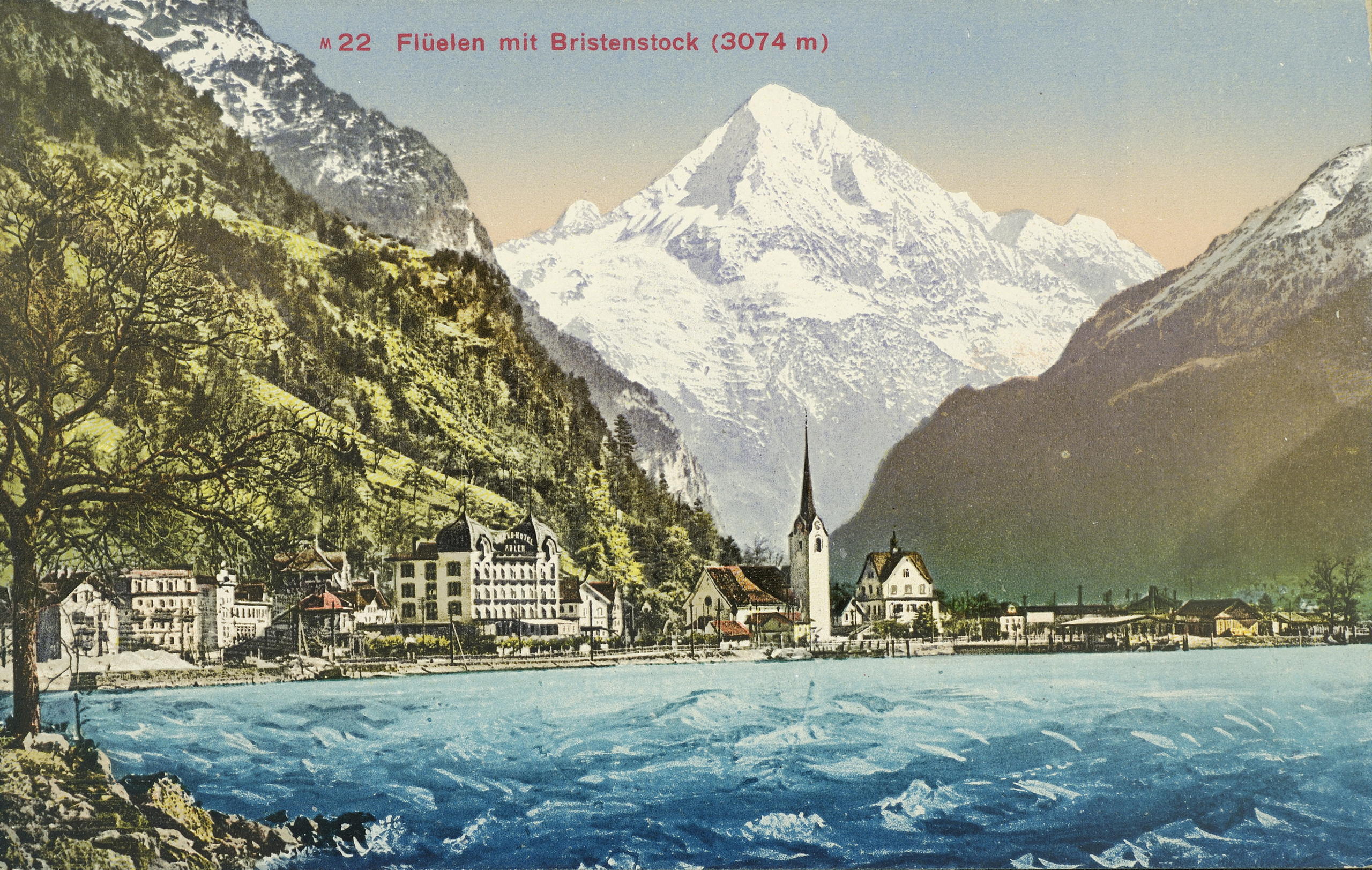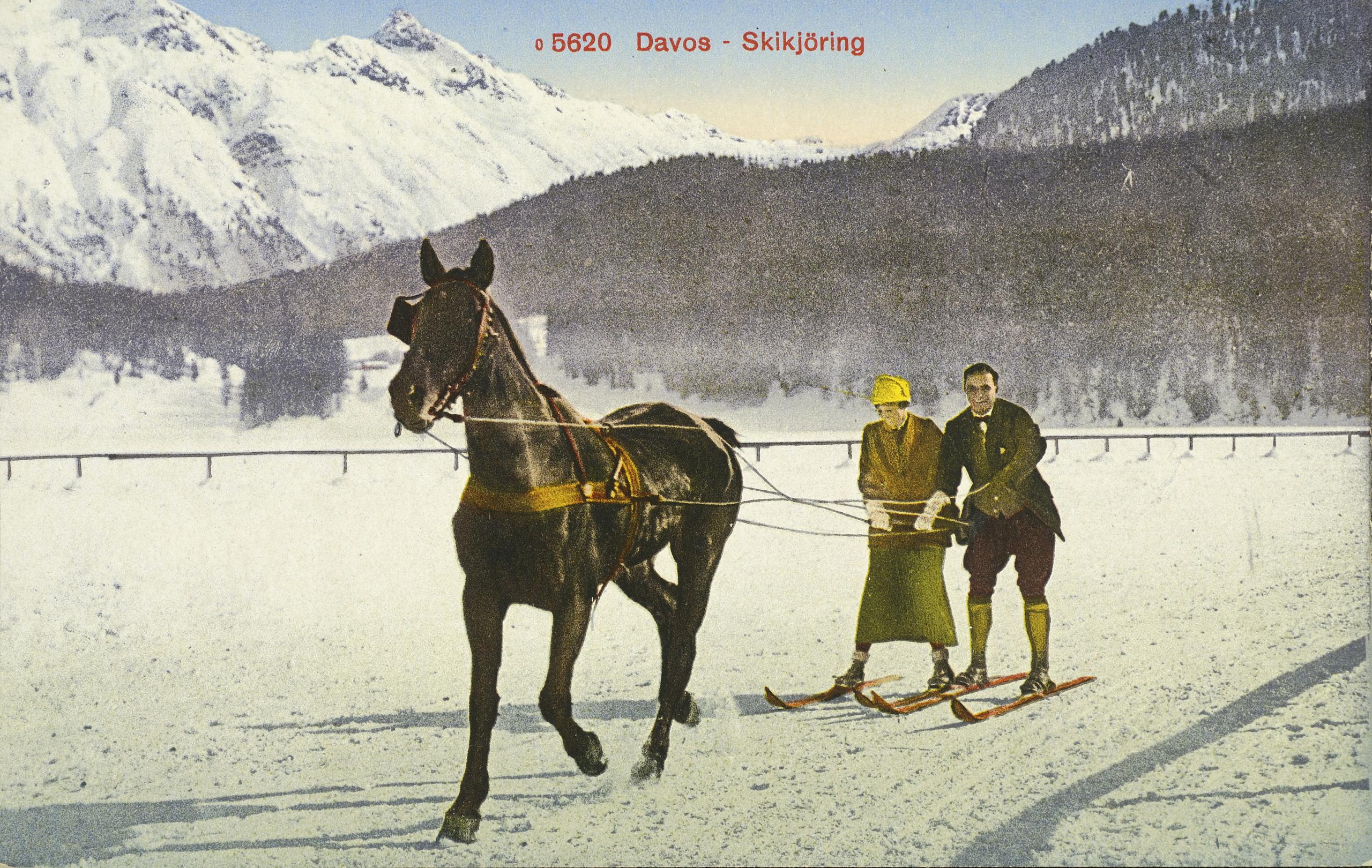
Postcards, now 150 years old, more colourful thanks to Swiss

The Austrian Post introduced “correspondence cards” in October 1869, but it was a Zurich lithographer who created an economical and award-winning process to make them more colourful.
Postcards provided a simple way to send a quick and inexpensive greeting, especially for travellers, and they proved to be quickly popular: within a month of their introduction, a million cards had been sold.
However, the first ones were black-and-white, and hand-colouring was the only option.
Enter Hans Jakob Schmid, the lithographer who invented the photochrome process for his employer, the Zurich printing house Orell Füssli. It worked like this: the black-and-white negative was projected onto as many as 16 light-sensitive stone slabs, which then printed in various colours. Because the colour was transparent, an almost infinite number of nuances could be generated with the 16 slabs.
Orell Füssli split its photochrome business into a subsidiary in 1889, and in 1895, the public limited company Photoglob & Co emerged, which granted licenses to London and Detroit, among other places. The process won a gold medal at the Paris World Exhibition in 1900.
At their peak in 1913, 112.5 million printed postcards were sold in Switzerland.

More
The colourful world of the Belle Epoque

More
Postcards from the First World War

In compliance with the JTI standards
More: SWI swissinfo.ch certified by the Journalism Trust Initiative
















![The four-metre-long painting "Sonntag der Bergbauern" [Sunday of the Mountain Farmers, 1923-24/26] had to be removed by a crane from the German Chancellery in Berlin for the exhibition in Bern.](https://www.swissinfo.ch/content/wp-content/uploads/sites/13/2025/12/01_Pressebild_KirchnerxKirchner.jpg?ver=cb688ed5)














You can find an overview of ongoing debates with our journalists here . Please join us!
If you want to start a conversation about a topic raised in this article or want to report factual errors, email us at english@swissinfo.ch.